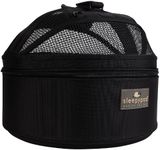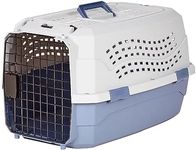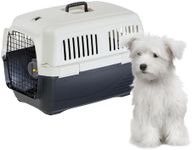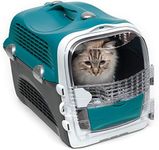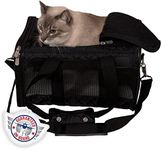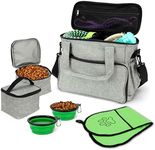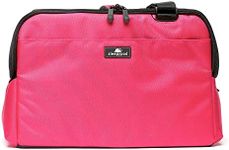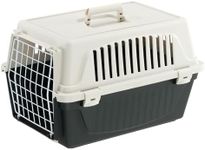Buying Guide for the Best Cat Carriers
Choosing the right cat carrier is essential for ensuring your feline friend's comfort and safety during travel. Whether you're taking your cat to the vet, on a road trip, or even on a plane, the right carrier can make all the difference. Here are some key specifications to consider when selecting a cat carrier.SizeSize is crucial when selecting a cat carrier. It should be large enough for your cat to stand, turn around, and lie down comfortably, but not so large that your cat feels insecure. Measure your cat's length and height, and choose a carrier that provides a few extra inches of space. For kittens or smaller cats, a smaller carrier may be appropriate, while larger cats will need more room.
MaterialCat carriers come in various materials, including plastic, fabric, and metal. Plastic carriers are durable and easy to clean, making them ideal for regular use. Fabric carriers are lightweight and often more comfortable for the cat, but they may not be as sturdy. Metal carriers are typically used for larger animals and may be overkill for most cats. Consider your cat's temperament and your travel needs when choosing the material.
VentilationProper ventilation is important to ensure your cat gets enough air and stays cool during travel. Look for carriers with multiple mesh windows or ventilation holes. This is especially important for longer trips or if you live in a warmer climate. Ensure that the ventilation openings are secure and won't allow your cat to escape.
SecuritySecurity features like sturdy zippers, locks, and latches are essential to prevent your cat from escaping. Check that the carrier has secure closures and that they are easy for you to operate but difficult for your cat to open. Some carriers also have additional safety straps or clips that can be attached to a seatbelt for car travel.
PortabilityPortability refers to how easy it is to carry the carrier. Look for carriers with comfortable handles or shoulder straps. Some carriers also have wheels for easier transport. Consider how you will be using the carrier—if you need to carry it for long distances, a lightweight and ergonomic design will be beneficial.
Ease of CleaningA carrier that is easy to clean will save you time and effort. Look for carriers with removable and washable pads or liners. Plastic carriers are generally easier to wipe down, while fabric carriers may require more thorough cleaning. Regular cleaning is important to maintain a hygienic environment for your cat.
AccessibilityAccessibility refers to how easy it is to get your cat in and out of the carrier. Carriers with multiple entry points, such as top and side openings, can make this process easier. This is particularly useful if your cat is resistant to entering the carrier. Ensure that the openings are large enough for your cat to comfortably pass through.
